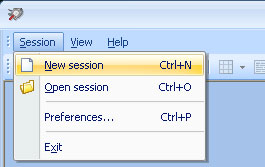
Submit your email address to get a link for quick download on your desktop and get started!
Specialists working with RS-485 communication may need to test and log the serial interfaces in order to identify and resolve problems that may appear in RS-485 networks. More than that, programmers who develop industrial serial applications may also require a specialized tool for reading and monitoring RS-485 Modbus ports their apps communicate with.




Serial Data Logger works as an RS485, RS422 sniffer and makes it possible to analyze data from several COM ports simultaneously. The solution is also useful when it's required to connect to an RS485 port already used by another app.
Modbus sniffer mode. The dedicated solution allows reading and recording Modbus data transferred over RS485/RS422/RS232 ports. The software provides full support for Modbus RTU and Modbus ASCII protocols. The unique functionality of the app allows logging and filtering Modbus data communicated by specialized serial devices.

Connecting to a COM port any time you need it even if the port is already used by another app. Once you start monitoring a required RS-485 interface, all data transmitted through it is shown in real time. Thanks to this option, you can timely resolve any problem that arises in your serial communication network.
Monitoring multiple COM ports at a time. Whether you need to analyze one, two, or several RS-485 ports, it’s possible to do this in one monitoring session. With that, the captured data will be saved to a single log.
Simulating serial communication. The Terminal mode option allows you to emulate sending particular data in different formats (string, binary, octal, decimal, hexadecimal, mixed). The RS-485 loopback feature offered by the software is particularly useful for sessions comparison.